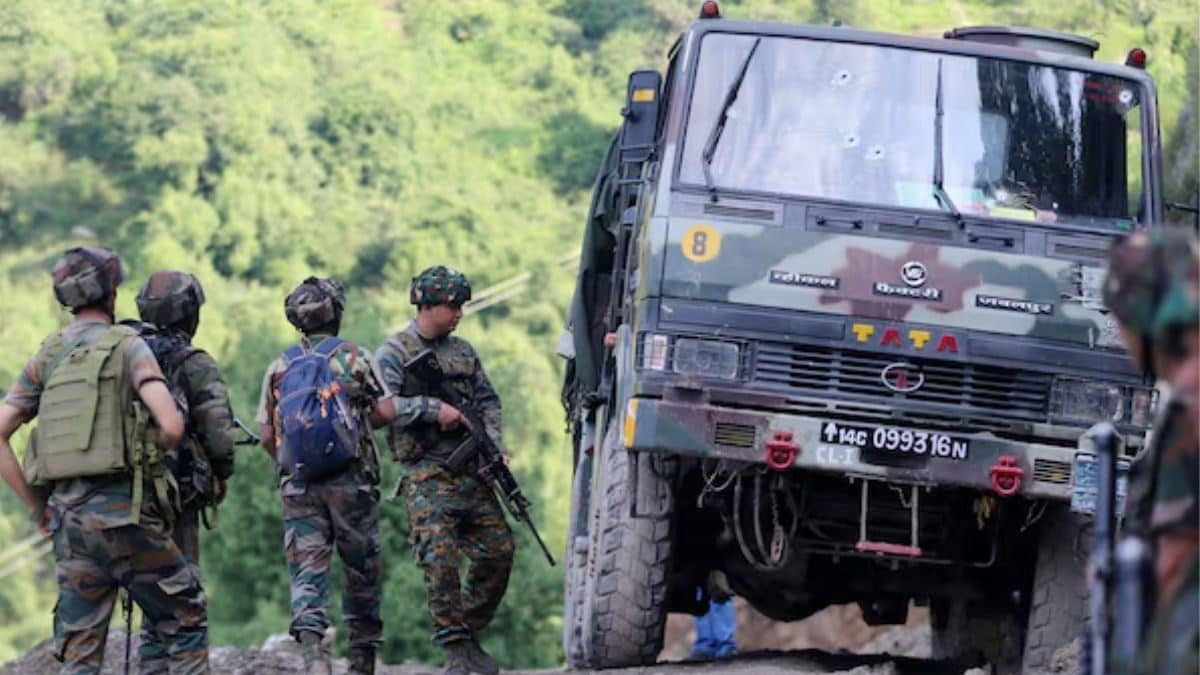Headline: Deadly Gulmarg Attack: 3-4 Militants Target Army Convoy
Gulmarg Attack Claims Four Lives as Security Forces Intensify Search Operations
A deadly attack on an Army convoy in the picturesque Gulmarg sector of Jammu and Kashmir has claimed the lives of four individuals, including two soldiers. Believed to be the work of three to four militants, the assault occurred on Thursday evening and has triggered an extensive search operation that continued into its second day on Saturday.
The tragic incident unfolded during an operational movement in the DH Pora area of Kulgam, approximately six kilometers from the popular tourist destination of Gulmarg. Senior Superintendent of Police (SSP) Mohammad Zaid Malik confirmed the involvement of the militants, stating, “According to the evidence we got from there, 3-4 militants were involved in the attack.”
Details of the Attack
On Thursday night, while en route to the Nagin post in the Affarwat range, the Army vehicle came under heavy fire in the Bota Pathri area. Tragically, the ambush resulted in the deaths of two soldiers and two Army porters, with one porter and another soldier suffering injuries in the gunfire.
Following the attack, security forces launched a comprehensive search operation that included the deployment of drones and helicopters to bolster ground efforts. The initial search was interrupted at dusk but resumed early on Saturday. Security teams are scouring the forested and built-up areas of Gulmarg as part of a coordinated effort to locate the assailants.
Security Measures Intensified
In recent weeks, military and police operations intensified in the Baramulla district, focusing on militant activity in the Pattan-Kreeri area. SSP Malik noted that prior to the attack, numerous input-based search operations were being conducted, raising concerns about the presence of infiltrators in the vicinity.
“The area is completely dominated by the Army, but there have been reports of a terrorist group infiltrating during early summer, seeking refuge in the high reaches of the Affarwat range,” he commented.
As a response to the attack, regional authorities are leveraging both human and technical intelligence to guide their sweeping search efforts. Senior officials from both the police and Army are overseeing the ongoing operations aimed at neutralizing the threats posed by the militants.
Impact on Local and National Security
The implications of this tragic event reverberate throughout Jammu and Kashmir, a region already fraught with tensions. The loss of life among military personnel not only impacts their families but also raises questions regarding the effectiveness of current security measures in preventing such attacks.
Local residents are anxious, questioning the safety dynamics in the region, particularly in light of recent reports about infiltrators. The constant threat posed by militant groups can deter tourism—an important economic activity for regions like Gulmarg, known for its breathtaking landscapes and winter sports.
Amid the tragedy, the coordination among the police, Army, and paramilitary forces demonstrates the ongoing commitment to maintaining security in the region. However, the efficacy of these operations will ultimately depend on their ability to counteract the tactical advances of militant groups.
As investigations unfold, community members and experts alike are left to ponder the future of security operations in one of India’s most strategically sensitive regions. Your thoughts on the effectiveness of current security protocols and how they might be improved are welcome. Share your views and insights in the comments below.
For more articles on security and technology advancements in counter-terrorism, please visit Shorty-News and check out insights from leading tech publications like TechCrunch, The Verge, and Wired.
By delving into the complexities of the Gulmarg attack and its implications for national security, we aim to foster a dialogue on how such incidents can shape public policy and safety protocols in the future.

